Invited Symposium: Hypertension III: Flow-Induced Vascular Remodeling
| INABIS '98 Home Page | Your Session | Symposia & Poster Sessions | Plenary Sessions | Exhibitors' Foyer | Personal Itinerary | New Search |
Results
TABLE 1. Mean arterial blood pressure (MBP), heart rate (HR), and body weight (BW) of the 3 groups of experimental animals.
n MBP HR BW(4wks) BW(7wks)
(mmHg) (min-1) (grams) (grams)
Group 1 8 89+5 431+10 117+5
Group 2 10 123+5* 419+10 113+5
Group 3 9 118+5* 106+6 267+9+
264+9+
* = p<0.05 versus group 1.
+ = p<0.05 versus body weight at 4 weeks (wks).
TABLE 2. Central hemodynamics and regional blood flow measured in group 3 rats with microspheres. ml/min ml/min/100g Cardiac output 45+10 18+5 Right kidney 5.3+0.3 370+22 Left kidney 4.9+0.3 348+24 Spinotrapezius 0.010+0.001 8.4+0.6 Cremaster Control 0.035+0.008 10.7+2.4 Orchidectomy 0.013+0.001* 8.4+0.5 n=9, *p<0.05 versus control.
FIGURE LEGENDS
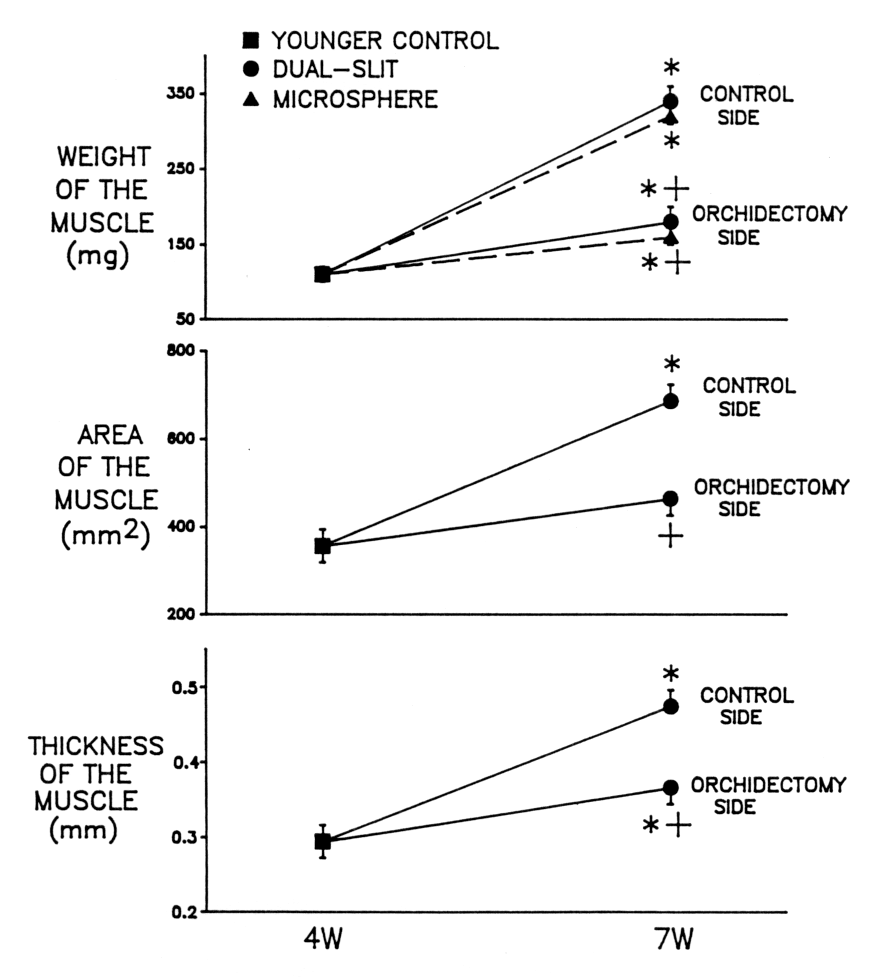 Figure 1. The weight, area and thickness of the cremaster muscle from younger control and older unilateral orchidectomized rats. * p<0.05 versus younger control and + p<0.05 versus control side.
Figure 1. The weight, area and thickness of the cremaster muscle from younger control and older unilateral orchidectomized rats. * p<0.05 versus younger control and + p<0.05 versus control side.
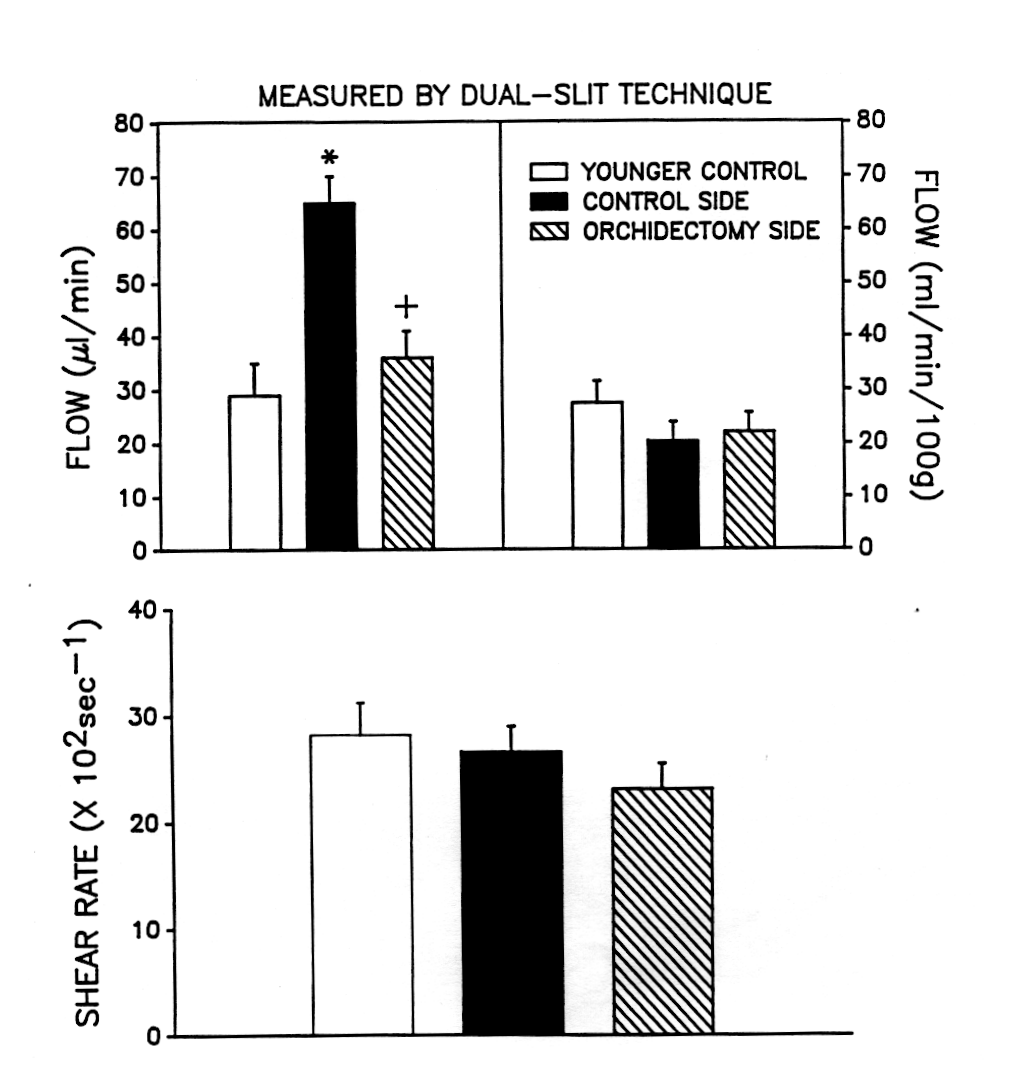 Figure 2. Upper panel: the total blood flow (ll/min) and blood flow per unit tissue (ml/min/100g) measured by the dual-slit technique. * p<0.05 versus younger control and + p<0.05 versus control side. Lower panel: shear rate in 1st-order arterioles (1A). There were no significant differences among the groups.
Figure 2. Upper panel: the total blood flow (ll/min) and blood flow per unit tissue (ml/min/100g) measured by the dual-slit technique. * p<0.05 versus younger control and + p<0.05 versus control side. Lower panel: shear rate in 1st-order arterioles (1A). There were no significant differences among the groups.
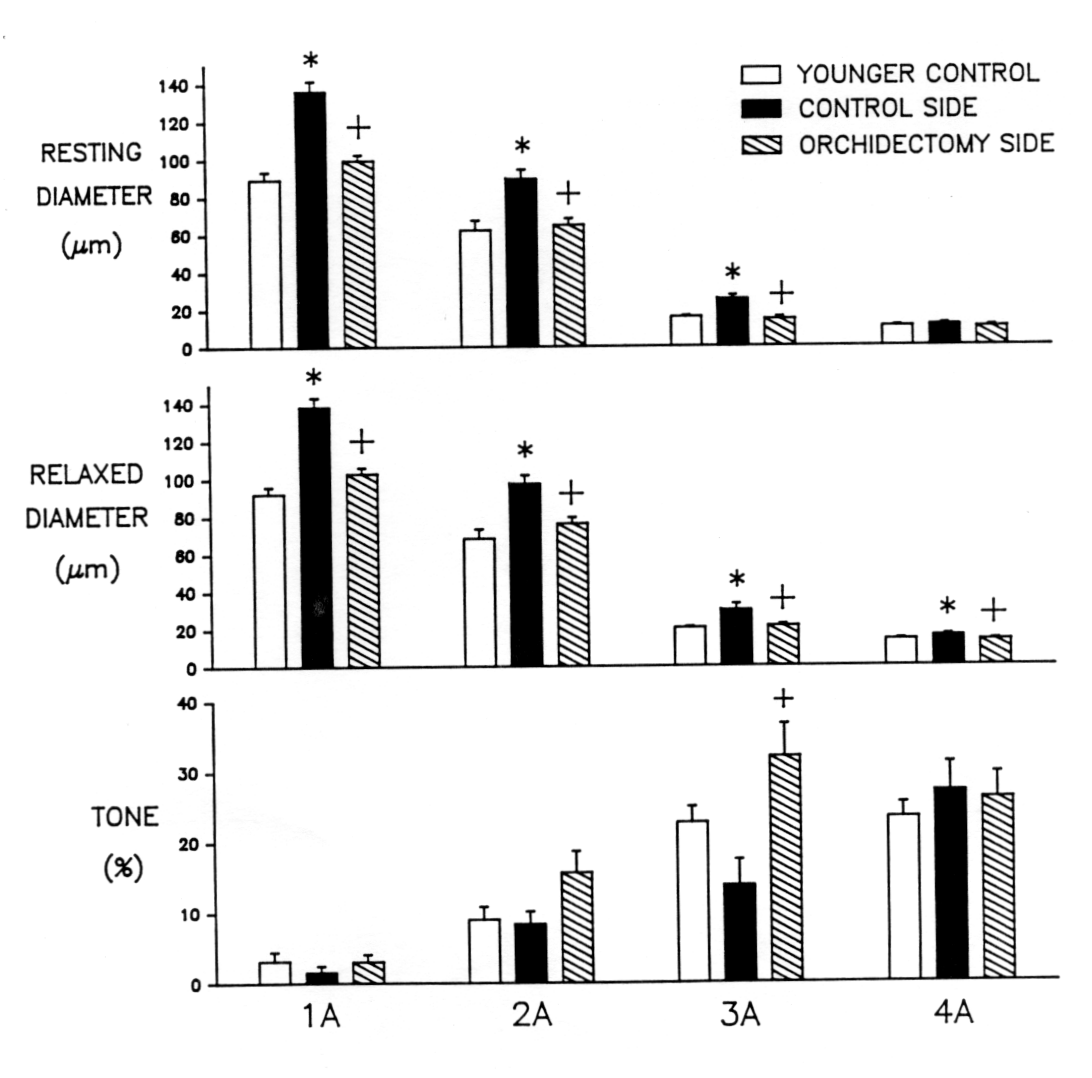 Figure 3. Dimensions of 1st-through 4th-order (1A-4A) arterioles in the resting state and after dilation with topical 10-3 M adenosine. Tone was calculated as the change in diameter from the resting to the dilated state, divided by the dilated diameter, times 100. * p<0.05 versus younger control and + p<0.05 versus control side.
Figure 3. Dimensions of 1st-through 4th-order (1A-4A) arterioles in the resting state and after dilation with topical 10-3 M adenosine. Tone was calculated as the change in diameter from the resting to the dilated state, divided by the dilated diameter, times 100. * p<0.05 versus younger control and + p<0.05 versus control side.
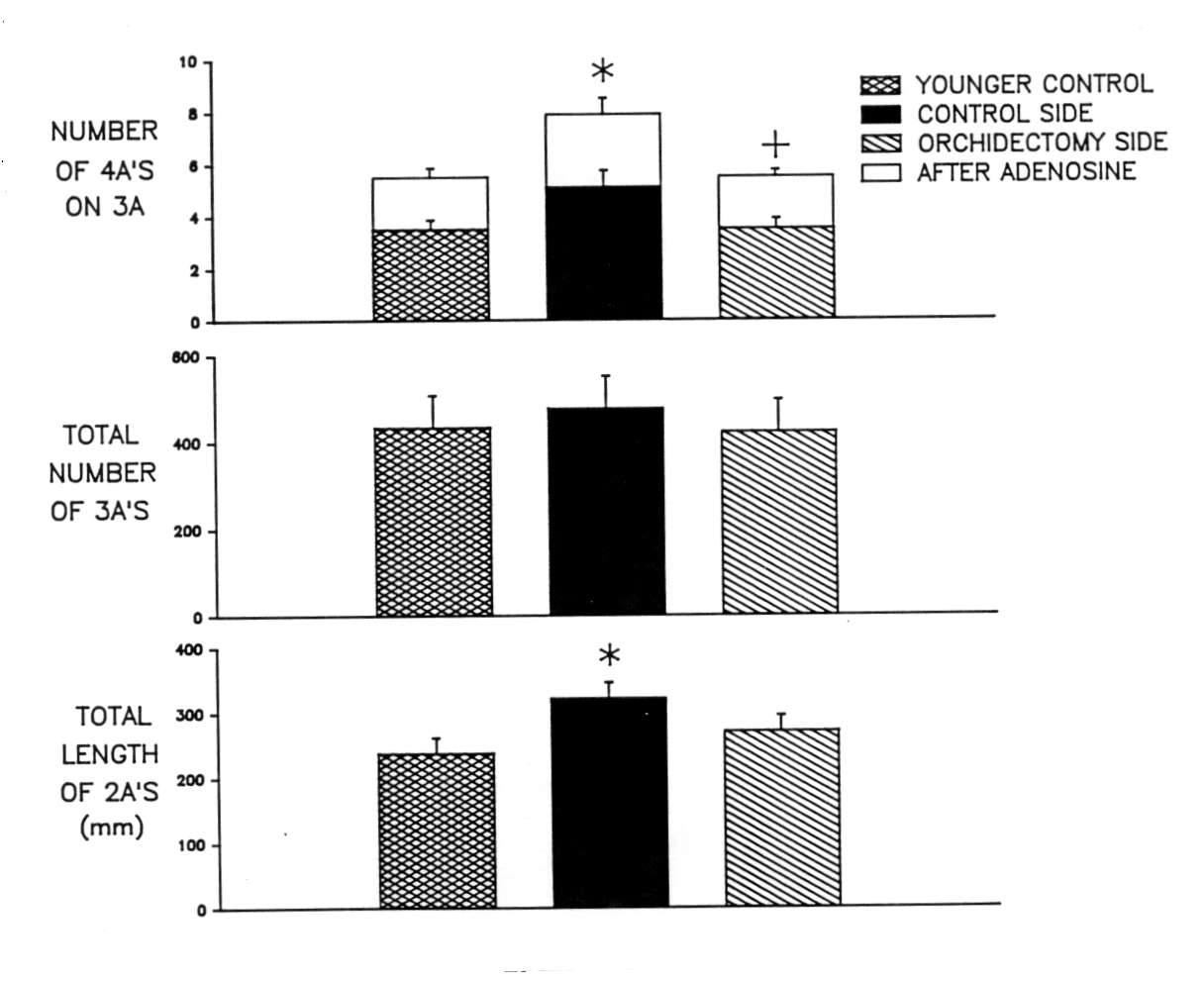 Figure 4. Upper panel: the number of flowing 4th-order arterioles (4A) on each 3rd-order arteriole (3A) before and after the topical application of 10-3 M adenosine. Middle panel: the total number of 3A's in the cremaster muscle. Lower panel: the total length of the arcading network (2A's) in the cremaster muscle. * p<0.05 versus younger control and + p<0.05 versus control side.
Figure 4. Upper panel: the number of flowing 4th-order arterioles (4A) on each 3rd-order arteriole (3A) before and after the topical application of 10-3 M adenosine. Middle panel: the total number of 3A's in the cremaster muscle. Lower panel: the total length of the arcading network (2A's) in the cremaster muscle. * p<0.05 versus younger control and + p<0.05 versus control side.
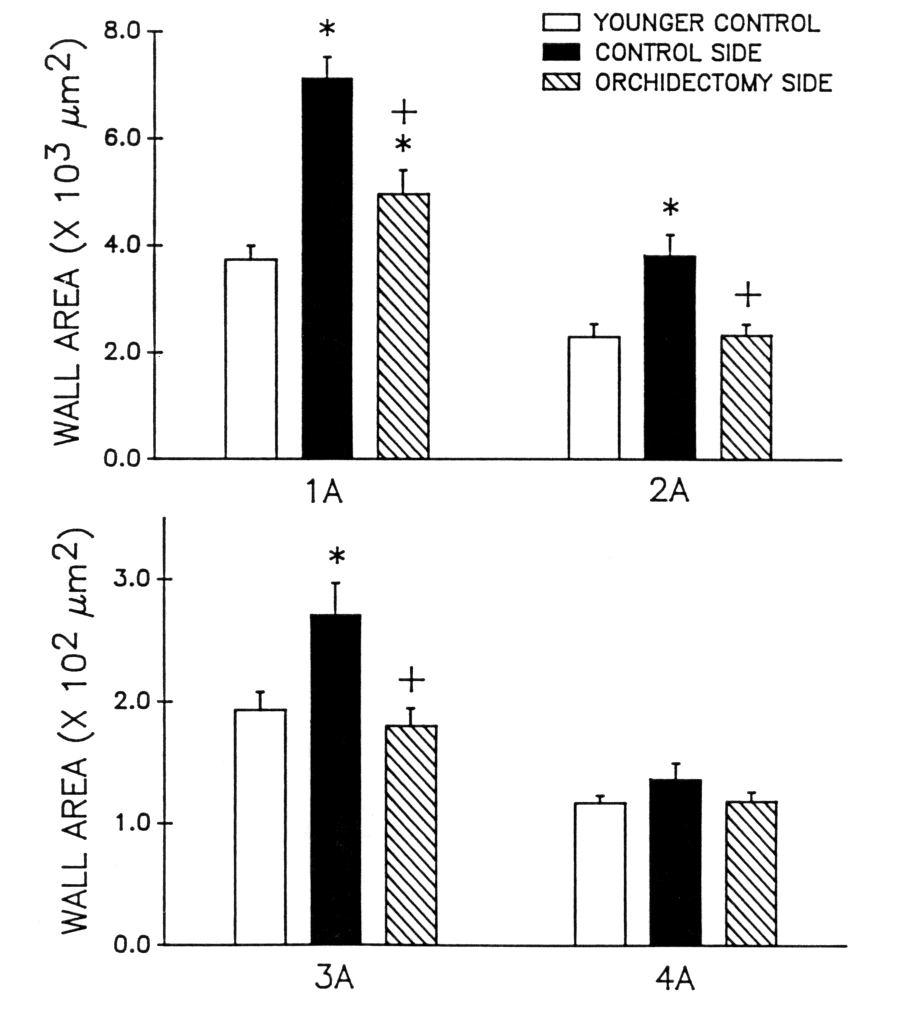 Figure 5. Cross-sectional wall area of 1st- through 4th-order (1A-4A) arterioles in the cremaster muscle. * p<0.05 versus younger control and + p<0.05 versus control side.
Figure 5. Cross-sectional wall area of 1st- through 4th-order (1A-4A) arterioles in the cremaster muscle. * p<0.05 versus younger control and + p<0.05 versus control side.
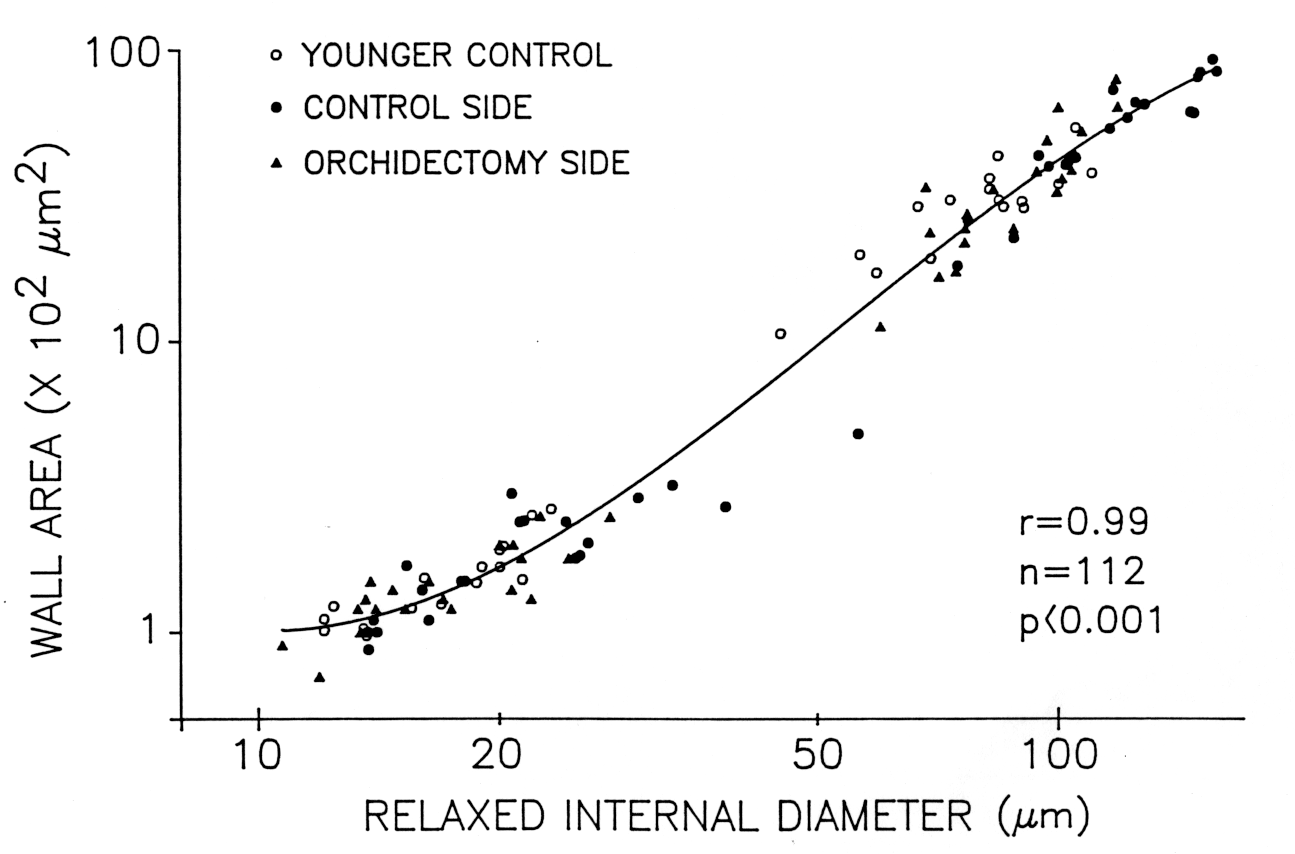 Figure 6. The relation between relaxed internal diameter and cross-sectional wall area for all 4 orders of arterioles in the 3 groups. The individual values are the average for each rat. The regression line follows a third-order polynomial equation.
Figure 6. The relation between relaxed internal diameter and cross-sectional wall area for all 4 orders of arterioles in the 3 groups. The individual values are the average for each rat. The regression line follows a third-order polynomial equation.
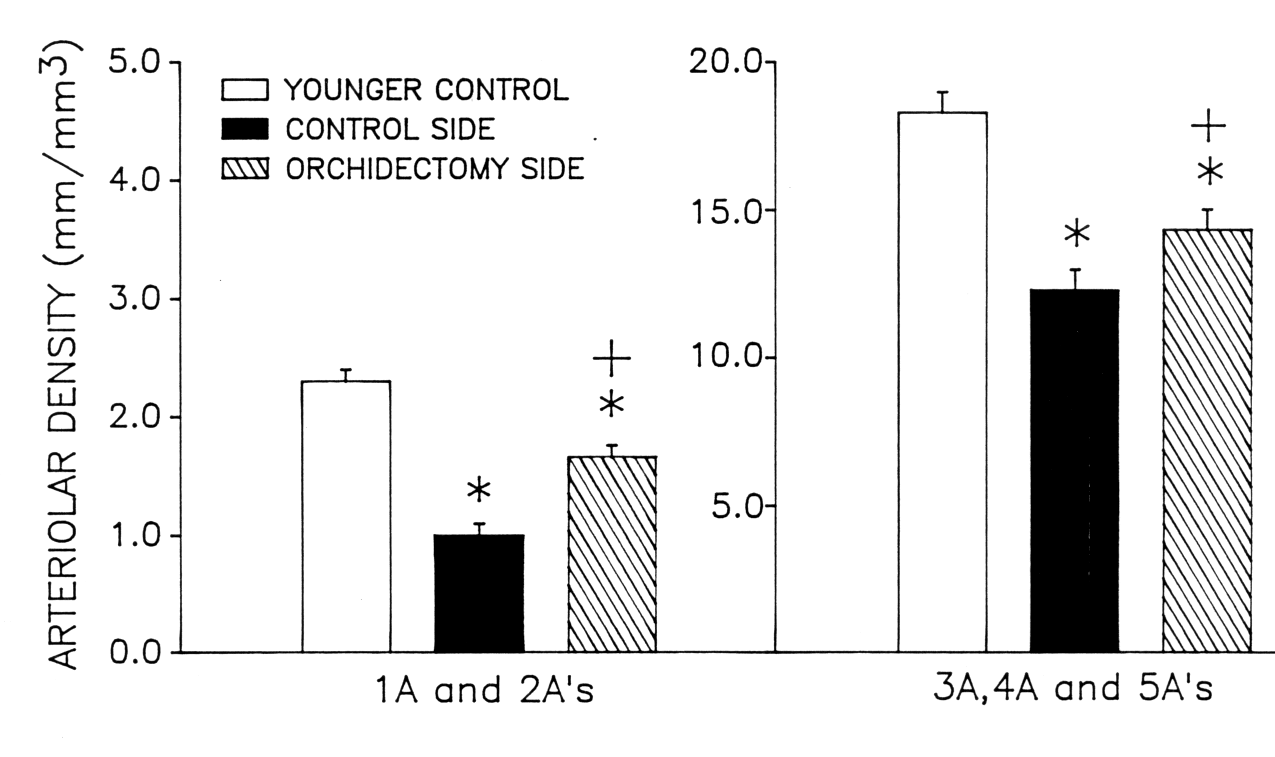 Figure 7. Density of 1st-through 5th-order (1A-5A) arterioles determined as length of vessels per unit volume of muscle. Vessels were perfusion-fixed in the dilated state and filled with microfil. * p<0.05 versus younger control and + p<0.05 versus control side.
Figure 7. Density of 1st-through 5th-order (1A-5A) arterioles determined as length of vessels per unit volume of muscle. Vessels were perfusion-fixed in the dilated state and filled with microfil. * p<0.05 versus younger control and + p<0.05 versus control side.
| <= Materials & Methods | RESULTS | Discussion & Conclussions => |
| Discussion Board | Next Page | Your Symposium |